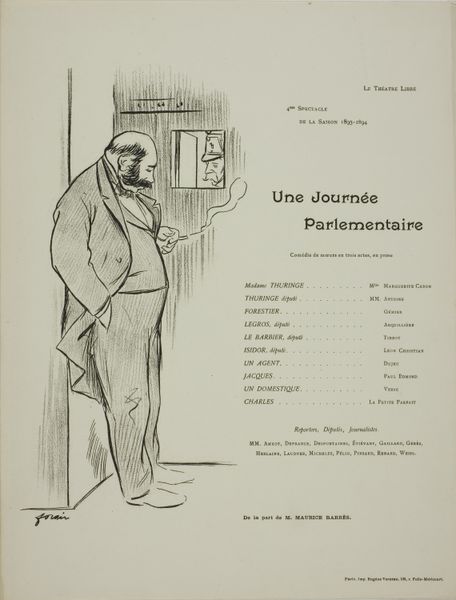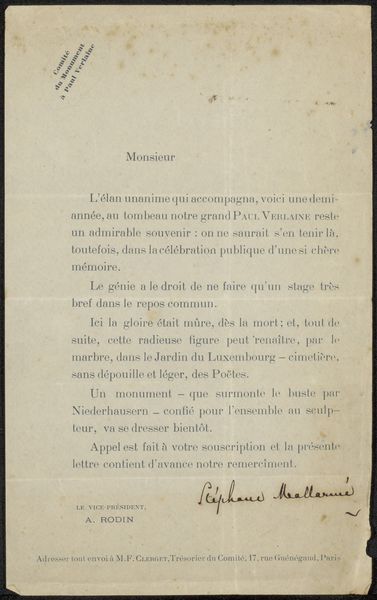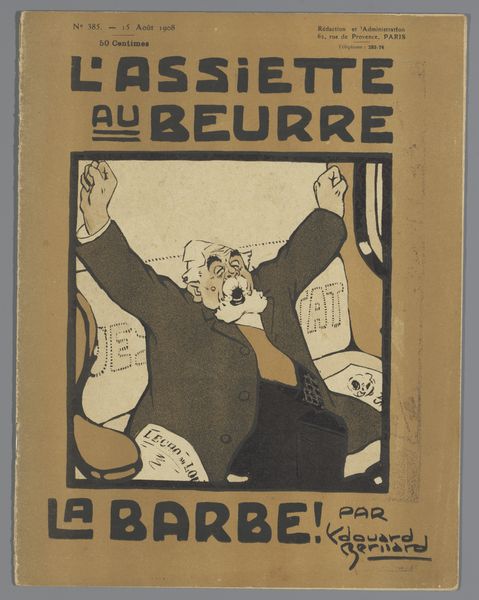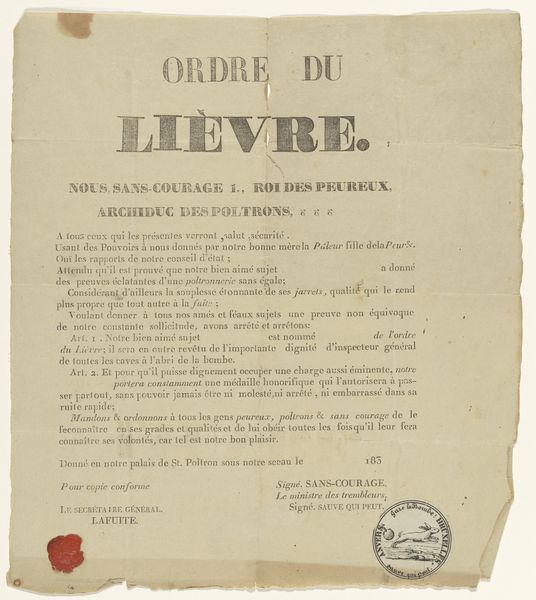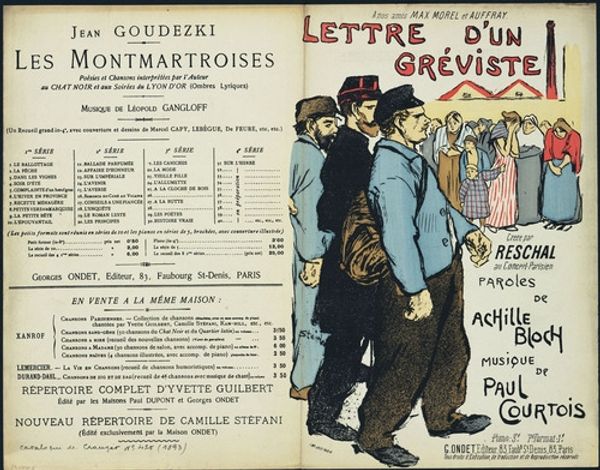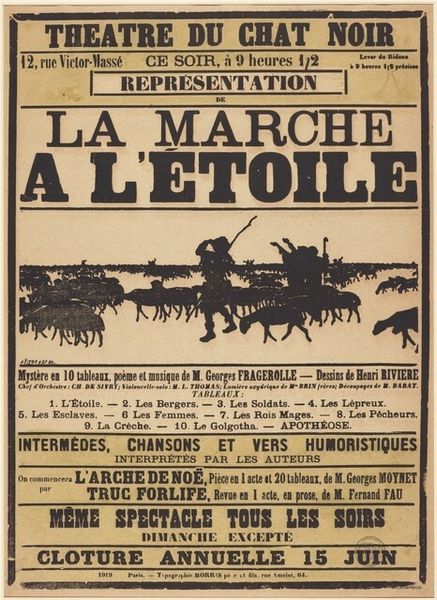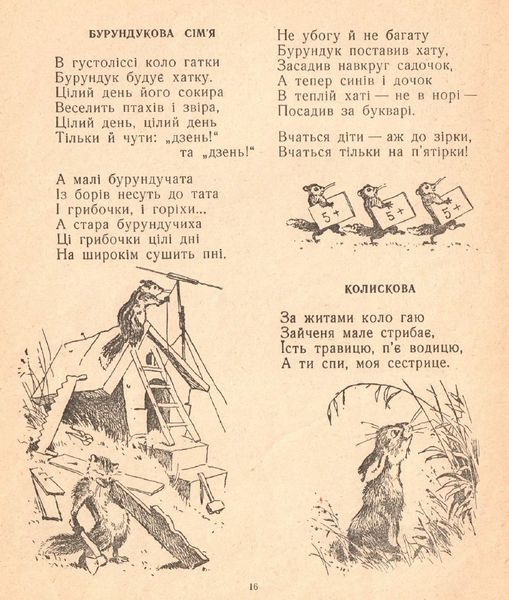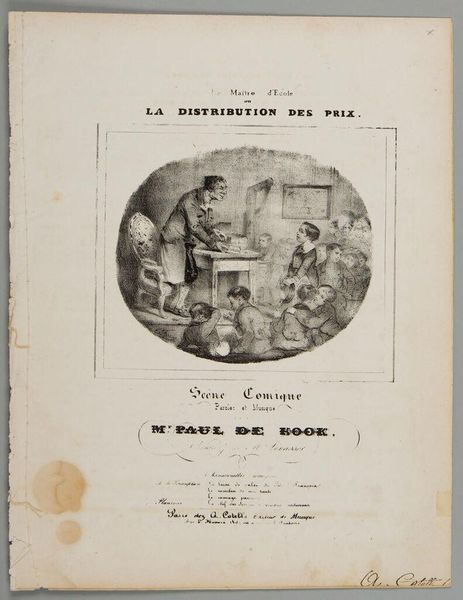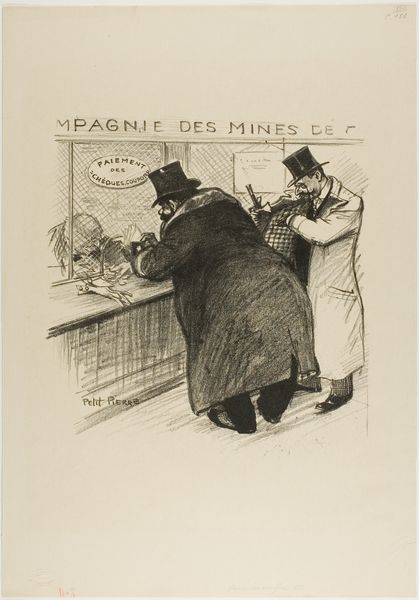
lithograph, print, ink, poster
#
ink drawing
#
lithograph
# print
#
social-realism
#
ink
#
symbolism
#
cityscape
#
poster
Copyright: Public domain
Editor: Here we have "Le Monde Nouveau," a lithograph by Théophile Alexandre Steinlen, created in 1896. It's immediately striking, with the stark contrast of the workers and the surrounding text, especially that bold title. What do you see in this piece, particularly within the socio-political context? Curator: This work speaks volumes about the socio-political climate of late 19th-century France. It served as a supplement for "La Petite République," a socialist newspaper. Note the portrayal of the laborers juxtaposed against the sheet music and text above. What does this suggest about the intended audience and the message Steinlen was trying to convey? Editor: It seems intended for the working class, almost like a call to action through accessible media. It is not only a newspaper supplement, but also a piece of art meant for a specific segment of the population. It brings to question who gets to be defined as consumers of art? Curator: Precisely! Steinlen's work blurs the lines between art and activism. By depicting laborers, he elevates their status within the visual landscape. Think about the rise of socialist movements during this period and the growing awareness of workers' rights. How does this image contribute to that broader cultural narrative? Editor: I guess it brings these ideas into everyday spaces and validates working class existence and identity in art. The image’s presence in a newspaper, meant to circulate in the city, positions these ideals into conversations and spaces often not affiliated with “fine art”. This accessibility feels radically democratic for the period! Curator: Absolutely. By embedding art within a newspaper, Steinlen democratizes access to art, challenging the established norms of art consumption and highlighting the crucial role of art in political discourse and the public sphere. It’s about who controls the image, and for what purpose. Food for thought, isn't it? Editor: Definitely! It makes me reconsider the spaces art occupies and its role in reflecting and shaping public opinion.
Comments
No comments
Be the first to comment and join the conversation on the ultimate creative platform.


